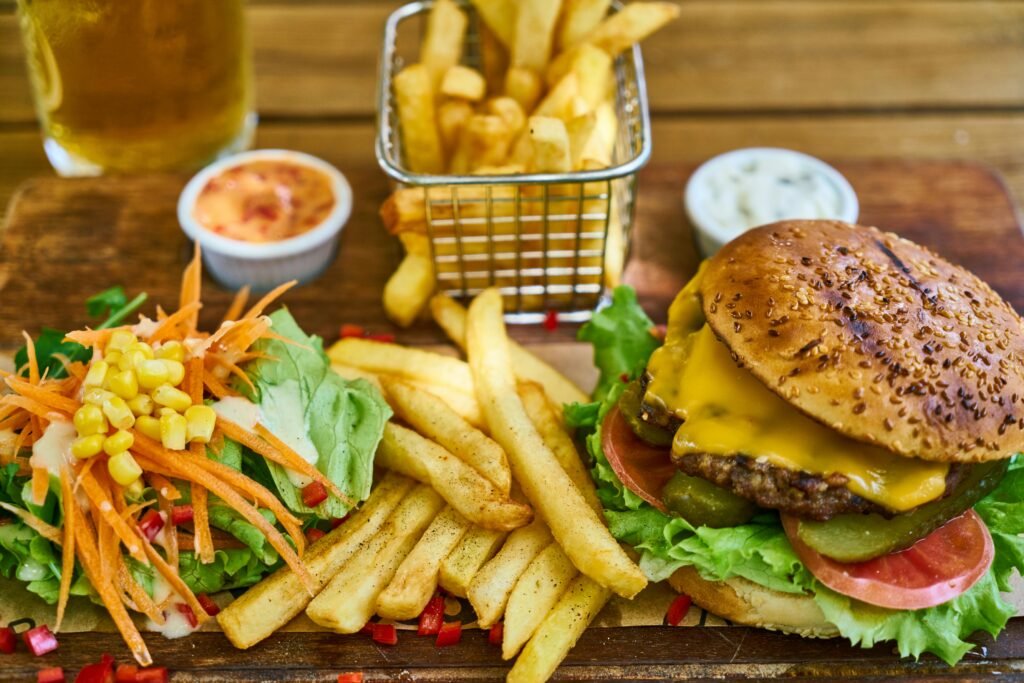
Understanding Liposuction Surgery: Benefits, Risks, and Recovery
Liposuction surgery has become a popular choice for many looking to remove stubborn fat that doesn’t respond to diet and exercise. If you’re considering this procedure, it’s essential to understand what it entails, the benefits, potential risks, and what to expect during recovery. This article will guide you through all these aspects in simple, easy-to-understand language.
What is Liposuction Surgery?
Liposuction, also known as lipoplasty or simply lipo, is a cosmetic surgery that removes excess fat deposits from specific areas of the body. Common areas for liposuction include the abdomen, thighs, buttocks, arms, neck, and back. The goal is to improve body contours and proportion, enhancing your overall appearance. Liposuction is the most common cosmetic operation in the United States. More than 300,000 procedures are carried out in the United States each year with costs ranging from roughly $2,000-3,500.

The Benefits of Liposuction Surgery
Targeted Fat Reduction: One of the main benefits of liposuction is its ability to target and remove fat from specific areas. This precision allows for better contouring and shaping of the body.
Improved Appearance and Confidence: Many people who undergo liposuction feel more confident and satisfied with their bodies. This boost in self-esteem can positively affect other areas of life, including social interactions and personal relationships.
Health Benefits: While liposuction is primarily a cosmetic procedure, it can have health benefits too. Removing excess fat can improve mobility and reduce the risk of certain health issues related to obesity, such as high blood pressure and diabetes.
Long-lasting Results: The fat cells removed during liposuction are gone for good. As long as you maintain a healthy lifestyle, the results of liposuction can be long-lasting, providing you with a more permanent solution to stubborn fat.
The Liposuction Procedure
Preparation
Before undergoing liposuction, you’ll have a consultation with a qualified plastic surgeon. During this meeting, you’ll discuss your goals, medical history, and any medications you are taking. Your surgeon will evaluate your suitability for the procedure and explain the different techniques available.
Techniques
There are several techniques used in liposuction surgery:
Tumescent Liposuction: This is the most common technique. A sterile solution is injected into the area being treated. This solution helps to numb the area, reduce bleeding, and make the fat easier to remove. The surgeon then makes small incisions and inserts a thin tube called a cannula to suction out the fat.
Ultrasound-Assisted Liposuction (UAL): This technique uses ultrasound energy to liquefy the fat before it is suctioned out. It’s particularly useful for removing fat from fibrous areas like the back or male breast tissue.
Laser-Assisted Liposuction (LAL): Similar to UAL, this technique uses laser energy to liquefy fat cells. The liquefied fat is then removed through a cannula. This method can also help tighten the skin.
Power-Assisted Liposuction (PAL): This technique uses a vibrating cannula to break up fat cells, making them easier to remove. PAL is often used in areas with denser fat deposits.
The Surgery
On the day of the surgery, you’ll be given anesthesia to ensure you are comfortable and pain-free. The type of anesthesia will depend on the extent of the procedure and your surgeon’s recommendation. It could be local anesthesia (numbing only the treatment area), sedation, or general anesthesia (putting you to sleep).
Once the anesthesia has taken effect, the surgeon will make small incisions near the treatment area. Through these incisions, the cannula is inserted, and the fat is suctioned out. The length of the surgery will depend on the size of the area being treated and the amount of fat being removed, but it typically lasts between one and three hours.
The Risks of Liposuction Surgery
Like any surgical procedure, liposuction comes with certain risks. It’s important to be aware of these potential complications:
Infection: There’s a risk of infection with any surgery. To minimize this risk, follow your surgeon’s pre- and post-operative care instructions carefully.
Bleeding: Some bleeding is expected during and after liposuction. However, excessive bleeding can occur, especially if you have a bleeding disorder or are taking certain medications.
Bruising and Swelling: These are common side effects of liposuction. While bruising usually subsides within a few weeks, swelling can last for several months.
Numbness and Changes in Sensation: It’s not uncommon to experience temporary numbness or changes in sensation in the treated area. In rare cases, these changes can be permanent.
Contour Irregularities: Sometimes, the skin can appear bumpy or uneven after liposuction. This can result from uneven fat removal, poor skin elasticity, or unusual healing.
Fluid Accumulation: After liposuction, pockets of fluid (seromas) can form under the skin. These may need to be drained by your surgeon.
Fat Embolism: This is a rare but serious complication where fat enters the bloodstream and travels to the lungs or brain. Immediate medical attention is required if this occurs.
Organ Damage: In very rare cases, the cannula can penetrate too deeply and damage internal organs.
Recovery After Liposuction Surgery
Recovery from liposuction surgery varies from person to person and depends on the extent of the procedure. Here’s what you can generally expect:
Immediately After Surgery
After the surgery, you’ll be taken to a recovery area where you will be monitored as the anesthesia wears off. You may feel groggy and experience some discomfort, which can be managed with pain medication prescribed by your surgeon. Most patients can go home the same day, but you’ll need someone to drive you and stay with you for the first 24 hours.
The First Few Days
During the first few days after surgery, you should expect some swelling, bruising, and soreness in the treated area. Your surgeon will provide you with specific instructions on how to care for the surgical sites, including changing dressings and keeping the area clean. You may also need to wear a compression garment to help reduce swelling and support the treated area.
The First Few Weeks
As you continue to recover, it’s important to take it easy and avoid strenuous activities. Most people can return to work within a week or two, depending on the nature of their job. However, you should avoid heavy lifting and vigorous exercise for at least four to six weeks. Your surgeon will give you detailed guidelines on when you can gradually resume normal activities.
Long-Term Recovery
Swelling can persist for several months, and it may take up to six months or more to see the final results of your liposuction. During this time, it’s essential to maintain a healthy lifestyle, including a balanced diet and regular exercise, to preserve the results of the surgery. Keep in mind that while liposuction removes fat cells permanently, it does not prevent new fat cells from forming if you gain weight.
Is Liposuction Right for You?
Liposuction is not a weight-loss solution or a substitute for a healthy lifestyle. It’s best suited for individuals who are close to their ideal weight but have stubborn fat deposits that don’t respond to diet and exercise. Here are some factors to consider when determining if liposuction is right for you:
Good Health: Candidates should be in good overall health, without conditions that could impair healing or increase surgical risks.
Stable Weight: Ideal candidates should have a stable weight and be committed to maintaining it after the surgery.
Realistic Expectations: It’s important to have realistic expectations about the results of liposuction. While it can improve body contours, it won’t change your overall body type or eliminate cellulite.
Non-Smokers: Smoking can interfere with the healing process, so non-smokers are preferred candidates. If you smoke, your surgeon will likely advise you to quit several weeks before and after the surgery.
Skin Elasticity: Good skin elasticity helps the skin conform to new contours after fat removal. If your skin is loose or has poor elasticity, your surgeon may recommend additional procedures, such as a tummy tuck, to achieve the best results.
Choosing a Surgeon
Selecting a qualified and experienced plastic surgeon is crucial for a successful liposuction outcome. Here are some tips for finding the right surgeon:
Board Certification: Ensure your surgeon is board-certified by a recognized organization, such as the American Board of Plastic Surgery (ABPS). This certification indicates that the surgeon has undergone rigorous training and adheres to high standards of practice.
Experience: Ask about the surgeon’s experience with liposuction, including how many procedures they have performed and their success rate. Experienced surgeons are more likely to achieve optimal results and handle any complications that may arise.
Before-and-After Photos: Reviewing before-and-after photos of previous patients can give you an idea of the surgeon’s work and the potential results you can expect.
Patient Reviews: Read reviews and testimonials from previous patients to gauge their satisfaction with the surgeon and the overall experience.
Consultation: Schedule a consultation with the surgeon to discuss your goals, ask questions, and assess your comfort level with them. A good surgeon will listen to your concerns, provide honest feedback, and explain the procedure and risks in detail.
Conclusion
Liposuction surgery can be a valuable tool for achieving a more sculpted and proportionate body when diet and exercise fall short. By understanding the benefits, risks, and recovery process, you can make an informed decision about whether liposuction is right for you. Remember to choose a qualified surgeon, maintain realistic expectations, and commit to a healthy lifestyle to enjoy the best possible results from your liposuction surgery.
Click here for more information:



“इमली के बीजों को फेंकने की भूल मत करें: 14,000 Crore के Market में छिपा है सोना”

कहीं आप भी तो नही कर रहे Badi Ilyachi और Chhoti Ilyachi का गलत उपयोग,जाने आयुर्वेद के अनुसार

भारतीय पंचांग और आयुर्वेद के अनुसार किस मौसम में क्या खाएं और क्या नहीं 2024?



अगर “Momos” खाकर आपको भी हो रही है उल्टिया ,तो कहीं आपको ये जानलेवा बिमारी तो नहीं?

10 Foods जो आपके लिए जानलेवा हो सकते हैं: अभी बंद करें इनका सेवन












